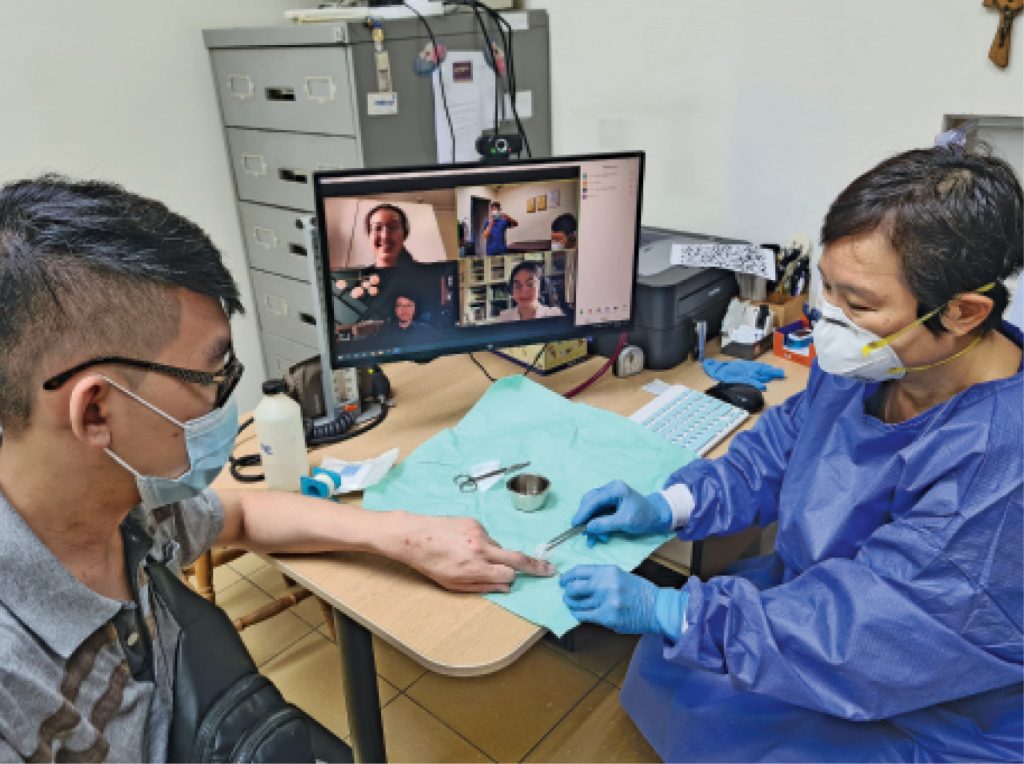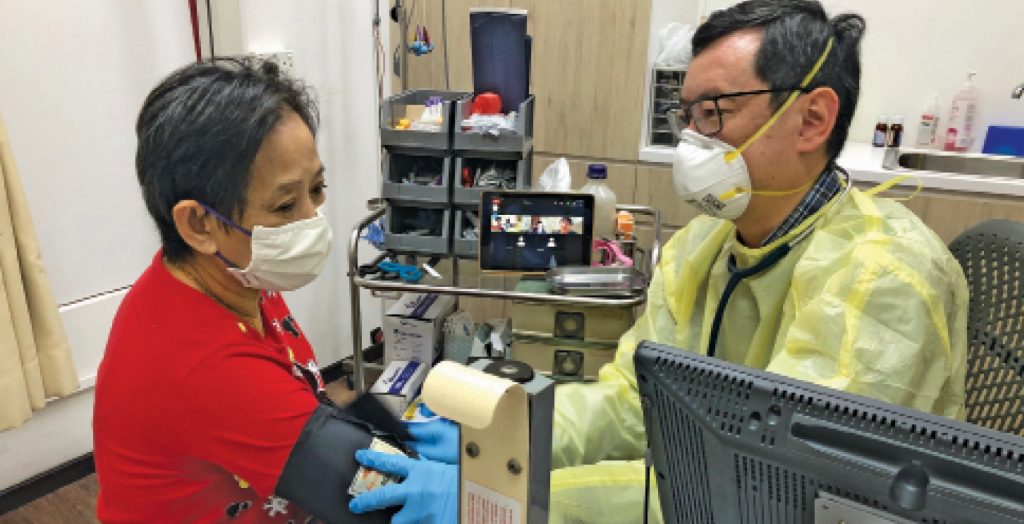Teaching Family Medicine in the Age of COVID-19
By Dr Victor Loh, Assistant Professor and Education Director, Family Medicine, NUS Medicine
“Dear assessors, all medical interviews scheduled for tomorrow have been cancelled.”
The announcement came over the PA system. I had just interviewed a medical school hopeful via Zoom. It was the third day of April and the Prime Minister of Singapore had just announced that a ‘Circuit Breaker’ (CB) would be implemented as a preventive measure to curb further spread of COVID-19. Students had already been banned from the wards, and with the start of CB, all undergraduate on-campus teaching would have to cease.
Distanced Learning
The third year Family Medicine (FM) posting had been anticipating this day. All in-person teaching activities had been converted to online webcasts and live-streamed workshops in the preceding weeks.
Just three days earlier, the team had successfully conducted Simulated Clinical Teaching (SCT)—an orchestration of 12 standardised patients, 12 tutors and almost 80 students, whose movements were timed as they practised history-taking and communication skills while being live-streamed on Zoom.
We were encouraged by the experience, which taught us that history-taking practice could be conducted effectively even on Zoom, and safely implemented with or without COVID-19. With on-campus learning now off limits, it was clear that the next SCT would need all parties to tune in via Zoom, from their home offices or clinics.
A last question now remained for the FM curriculum: How do we provide clinical training when students are not permitted in the clinics? We needed to start planning rapidly—the FM clinical block was scheduled to start in a month’s time.
Proof-of-Concept
Using Zoom for clinical teaching began as a vague notion. A search of the literature offered little in terms of concrete details. The idea took further shape only in conversations with the innovators among the community of Family Practice (FP) tutor colleagues.
Willing students and patients were soon recruited for a pilot. In that pilot, students Zoomed in to their supervisor’s consultation rooms, and successfully took a history from the volunteer patient. We now had positive proof-of-concept.
![]()
What is Simulated
Clinical Teaching (SCT)?
Students practising patient history-taking and communication while being
live-streamed on Zoom.
Family practice tutors huddle
The following week, tutors were called to meet on Zoom to discuss options for teaching in the upcoming clinical block. It was at this online huddle that the idea of conducting “live-streamed clinical teaching” was broached, and Dr Lee Oh Chong Leng and Dr Leong Choon Kit shared their experiences of the pilots they had separately conducted.
Tutors were awash with questions, and bounced ideas off each other. The discussion opened possibilities in teaching and lifted some of the gloom wrought by the daily COVID-19 reports.
The meet ended with an initial group of 16 tutors agreeing to try out live-streamed clinical teaching. Tutors were organised into four groups of four tutors, so that each group could share know-how and resources. We were now ready for the upcoming FM clinical block.
The Zoom meeting that was convened just after the clinical block started saw a lively discussion among tutors. It was a time of massive learning; many tutors until recently had not used Zoom. FP Tutors shared the possibilities they had discovered with live-streamed teaching.
Discussions shifted from the topic of device configuration—how many devices one could use on a single account, what audio and video settings to use to where one could procure a webcam during the CB. The question of device positioning threw up other issues—how could the webcam be positioned, how to toggle the video and voice functions, how to live-stream close-ups of skin conditions; to discussions on what types of conditions, and what types of patients, would be most suitable for the live-streamed platform.
These online sessions soon became weekly to fortnightly evening fixtures. It was both a platform for the FP tutors to share their experience of live-streamed teaching amid COVID-19, as well as a community of practice where we shared a sense of optimism in the face of uncertainty.

Medical students observed through Zoom the proceedings in a clinic as Dr Angela Lim dressed a patient’s wound.
Preparing for the Future
In tackling the pandemic poser about how we could continue to provide clinical training with real patients when students are not allowed in the clinics, we have learnt that:
![]()
It is essential that we become adept at using telehealth, especially for teaching
![]()
Live-streamed clinical training is good but incomplete, because actual human contact is essential in teaching and doctoring
![]()
Banding together as a community of practitioners helps us to jointly face a common problem, and encourages optimism as we face uncertainty together
Live-streamed Clinical Learning
The live-streaming platform allowed students to visit the frontlines while staying safe in their homes. Through Zoom, they were able to watch the goings-on in the clinics of the FP tutors, many of whom ran Public Health Preparedness Clinics (PHPCs), some of which were equipped to perform SASH (Swab-and-Send-Home) as part of the national strategy to contain the spread of COVID-19.

Medical students observed on Zoom as Dr David Cheong checked the blood pressure of his patient.
Similar to the situation for in-person clinical training, tutors would ask patients for permission for students to be present before continuing with the consultation. Interestingly, patients were usually comfortable both with being observed and communicating with the students on live-stream.
The platform allowed students to engage with tutors in case-based discussions, take history from patients, recognise clinical signs, observe the myriad of activities that family physicians engaged in, and not least of all, observe and appreciate the rapport built over the years between the doctors and their patients.
Tutors generally found the experience positive. Some shortcomings of live-streamed learning compared to in-person clinical training include the inability to perform procedures and physical examination, as well as difficulty in picking up non-verbal communication.
Live-streaming however opened up teaching possibilities. Some tutors organised themselves in pairs and their students could join either clinic through Zoom, depending on what was being taught. In fact, students could observe General Practice clinics situated beyond the shores of Singapore, in countries such as Australia and New Zealand where some of our colleagues are located.
At the time of writing, the team is working on the reintroduction of in-person clinical training in the FP setting. We thank all FP tutors for their commitment to teaching, including Dr Leong Choon Kit and Dr Lee Oh Chong Leng, for championing live-streamed clinical teaching from the FP consultation room.
